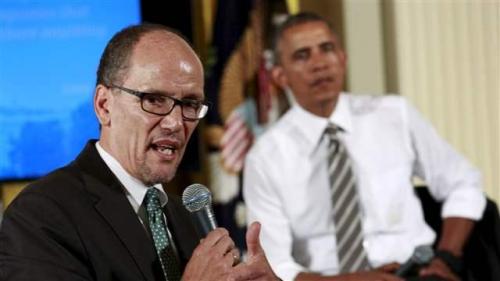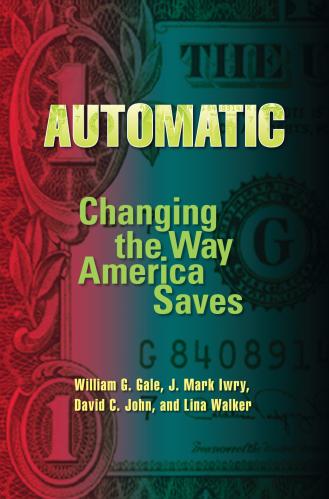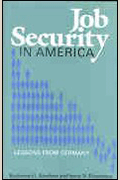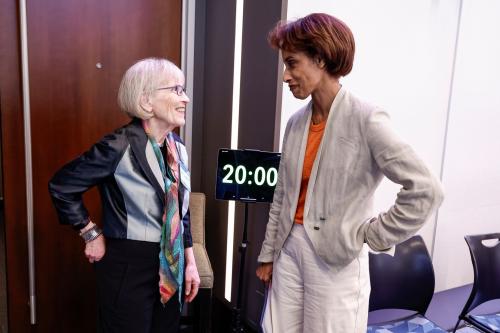This article originally appeared in Pensions & Investments on April 12, 2017.
Senate Republicans are voting to repeal the Labor Department’s recent rules that would have expressly allowed states and cities to sponsor a type of individual retirement account, called an automatic IRA. These votes will rescind those rules, because they already have been rejected by House Republicans and the administration supports rescinding them.
While Republicans objected to a patchwork of state-sponsored retirement plans, Congress should promptly pass a federal automatic IRA invested by the private sector. This vehicle, developed by conservatives, is the most feasible way of substantially increasing retirement savings in the U.S.
About a third of all Americans have no retirement savings, and most don’t have enough to retire comfortably. The main reason: More than 60 million American employees have no retirement plan offered to them by an employer.
Such employees are eligible to set up an IRA at a qualified financial institution and receive a tax deduction. But very few get around to filling out an application and making regular contributions.
Yet, according to many studies, if 2% or 3% of an employee’s wages were automatically placed in a retirement plan — unless he or she opted out — a substantial majority would stay in the plan. The automatic IRA was designed by conservatives at the Heritage Foundation to take advantage of this behavior response.
Here’s how it would work: Employees in companies above a certain size, without a company-sponsored retirement plan, would be required to contribute a specified percentage of their wages to an IRA plan — unless they opt out. The employers would not have to make any contribution; instead, they simply must connect their payrolls to an IRA plan run by a qualified financial institution.
Republicans objected to automatic IRAs sponsored by states for several reasons. First, the Labor Department’s rules exempted such IRAs from the strong participant protections afforded by the federal Employee Retirement Income Security Account. But many states have included similar “fiduciary duties” in their authorizing legislation for automatic IRAs.
Second, Sen. Mitch McConnell, R-Ky., asserted the Labor Department’s rules gave state sponsored IRAs an unfair “competitive advantage” over private-sector retirement plans. Other Republicans were concerned about the problematic record of many states in running pension plans.
Third, and most importantly, opponents like the U.S. Chamber of Commerce worried that different state laws would lead to a patchwork of retirement plans with different conditions across the country. These differences would be especially challenging for companies with employees in more than one state.
An independent, bipartisan commission, established by the U.S. Chamber of Commerce in 2007, has already called for a federal automatic IRA for all firms of 21 or more employees without a retirement plan at work. If this number is too low for some Republicans, Congress could begin with automatic IRAs for firms of 41 or more employees that do not offer a retirement plan.
In any event, these employers would not have to do much — just connect their payroll systems to the IRA plans of a qualified financial institution and send contributions every quarter — unless an employee opted out of such retirement contributions. These employers already retain outsider vendors to deduct, and forward, Social Security and Medicare taxes from employees’ wages.
Some Democrats might be concerned the IRA plans chosen by employers would be too costly relative to other plans. In response, Congress could require every automatic IRA plan to offer a diversified investment fund, with a prudent mixture of publicly traded stocks and highly rated bonds, whose expense ratio did not exceed the median level for that type of fund.
In short, rather than arguing whether state-sponsored IRAs can survive the demise of these Labor Department rules, Republicans and Democrats should get together behind a federal automatic IRA. It is the most effective vehicle for harnessing the power of inertia to increase retirement savings of 60 million employees.
Robert Pozen has been a nonresident senior fellow at Brookings since 2010. In 2015, he generously committed to endow the Director’s Chair for the Urban-Brookings Tax Policy Center. Until 2010, Pozen was executive chairman of MFS Investment Management and, before 2002, served in various positions at Fidelity Investments. He did not receive financial support from any firm or person for this article or from any firm or person with a financial or political interest in this article. He is currently not an officer, director, or board member of any organization with an interest in this article.









Commentary
Op-edHow to increase retirement savings of 60 million employees
April 11, 2017